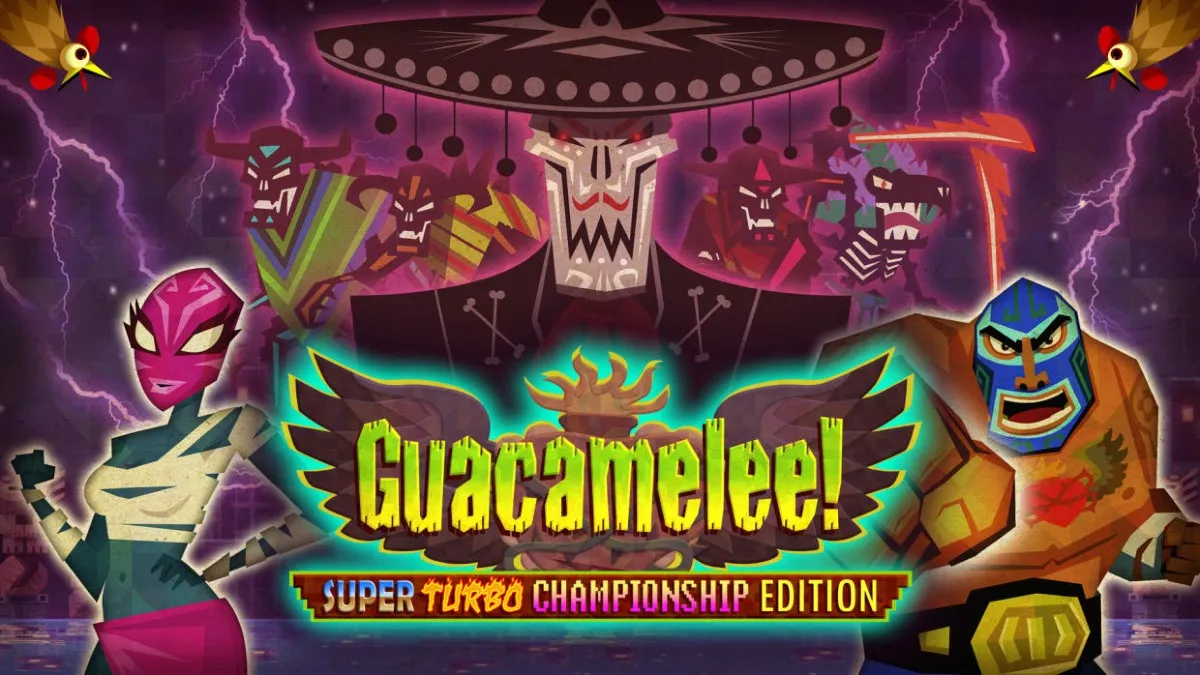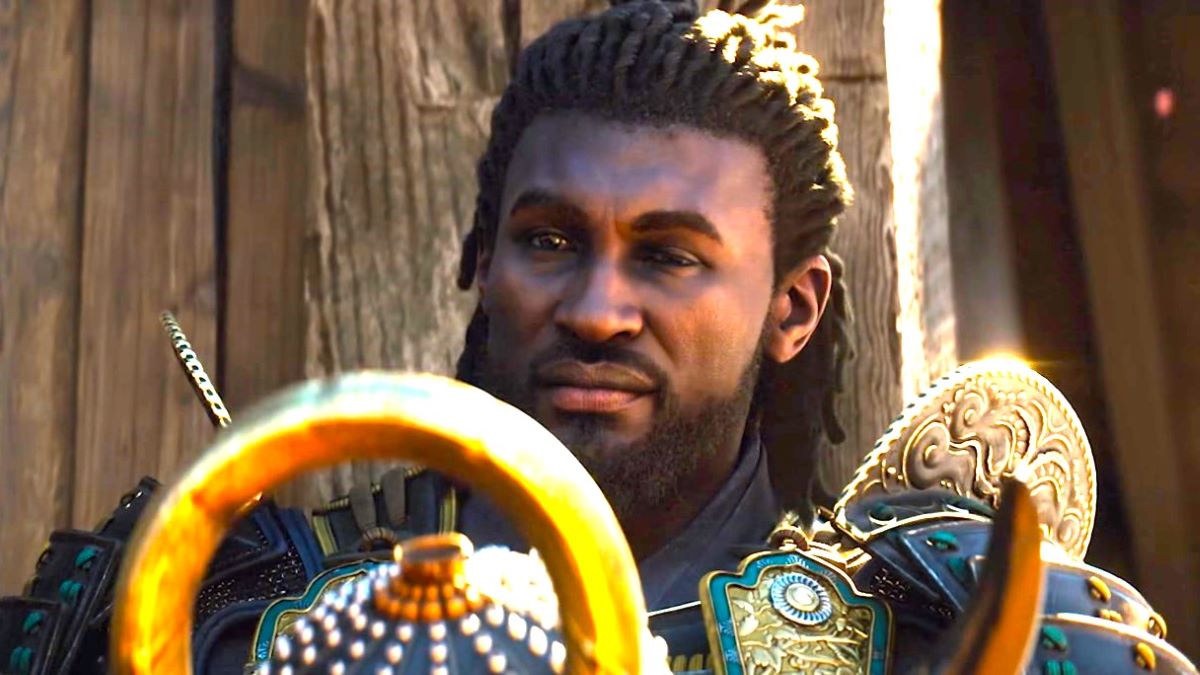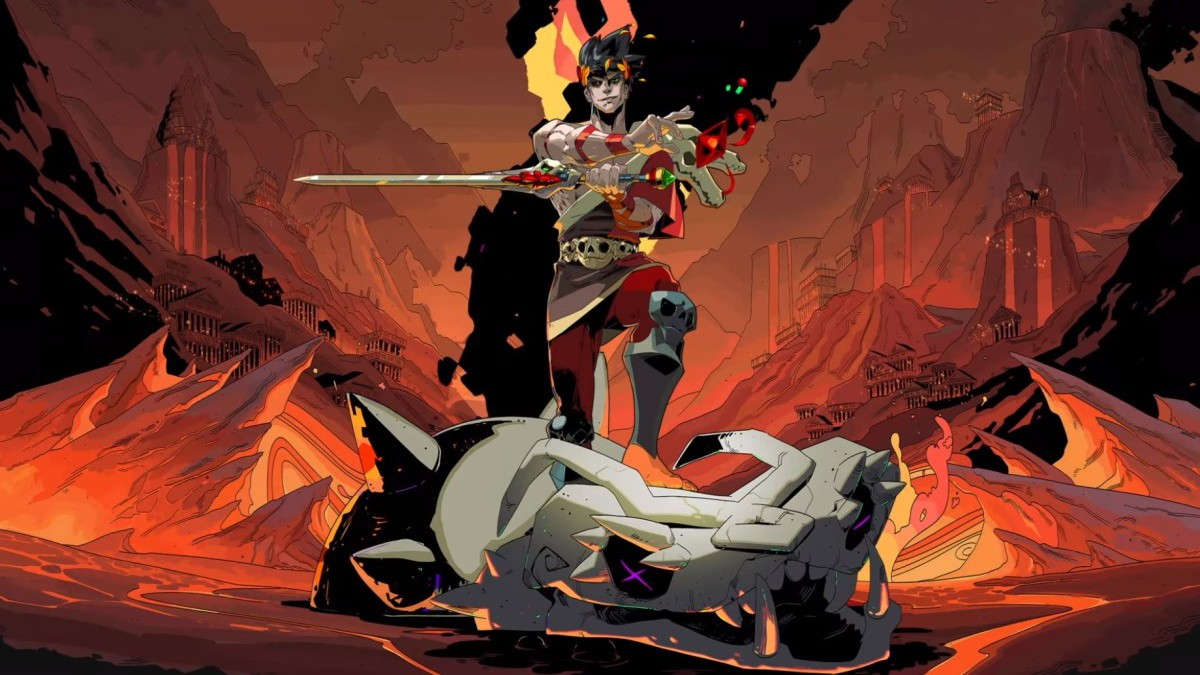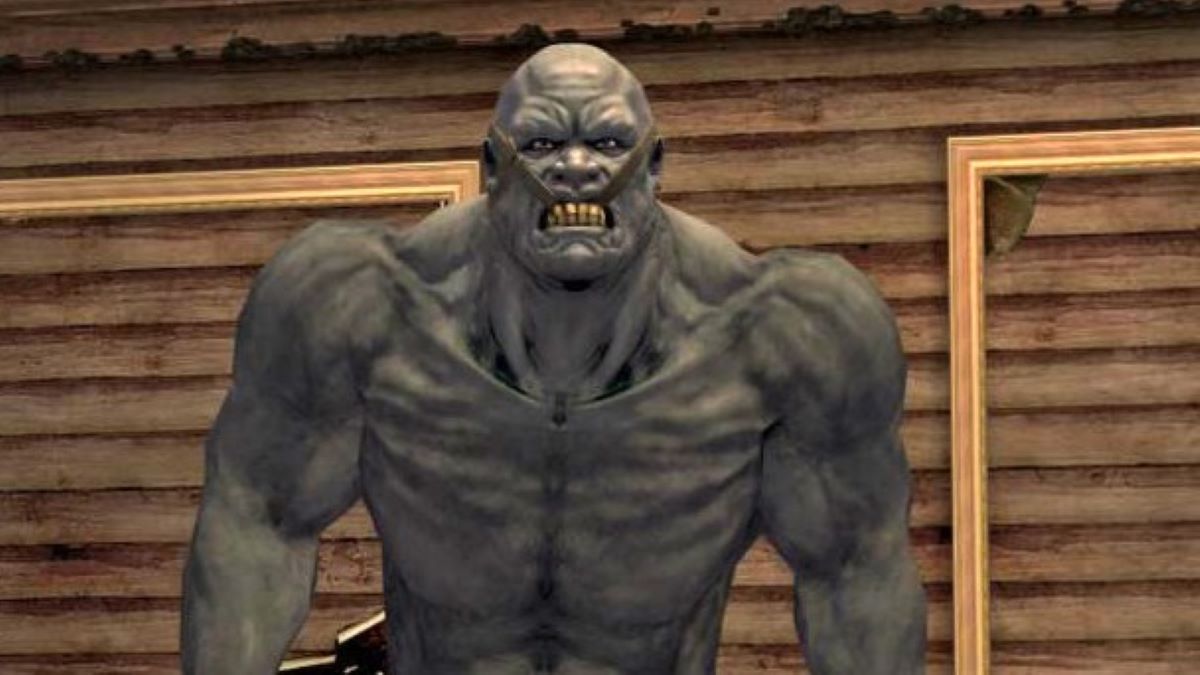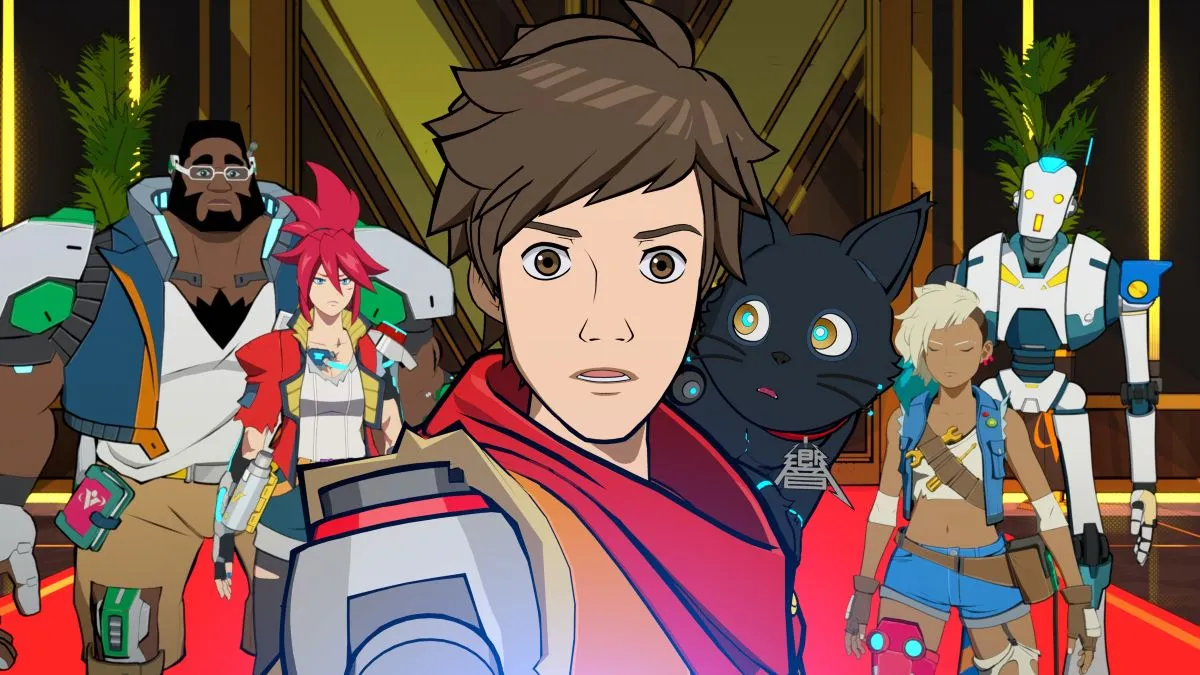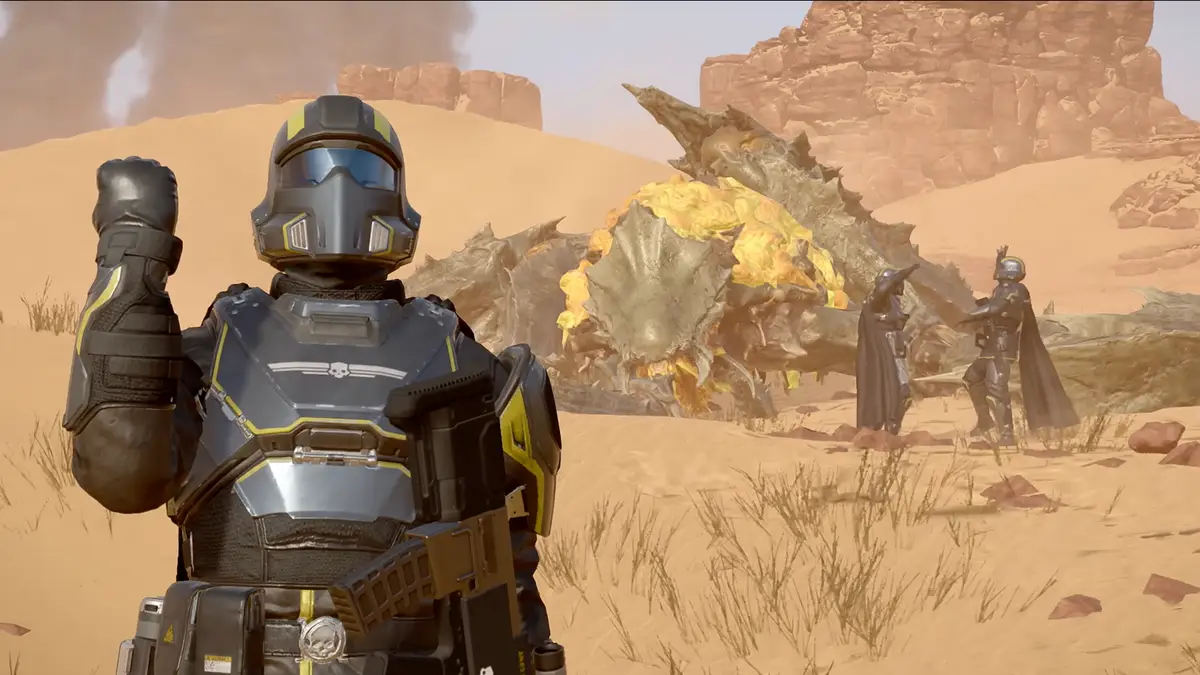With Metroidvanias — whether you think the term is industry gobbledygook or a legitimate genre — there’s no denying the concept’s premier flavor within the industry. Following the lead of Super Metroid and Castlevania: Symphony of the Night, there’s something so captivating about large, explorable worlds that unfurl more and more with each newly acquired upgrade, opening new paths and allowing you to reach that one secret that’s been teasing you since the opening area. Plenty of recent indie games — Hollow Knight, Axiom Verge, Ori and the Blind Forest, and countless others — have enraptured the hearts and minds of brave adventurers worldwide. Look back a decade, however, and you’d find this wasn’t always the case — at least, not until a brave luchador kicked in the doors and showed everyone the way.
On April 9, 2013, Drinkbox Studios brought the heat with the release of Guacamelee!, a Mexican-inspired Metroidvania where players controlled Juan the Luchador on his quest to save his best friend and love interest Lupita from the insidious undead skeleton Carlos Calaca (literally Carlos Skeleton) and his cadre of fiends. The Toronto-based team brought a reverent artistic touch, smattering the world with loving (yet still cheeky) references to other games within the indie scene (one particular recurring gag indebted to the Metroid series seems like a copyright claim still waiting to happen). The striking visuals — an art style developed from Mexican folklore and culture — mixed with witty humor and satisfying gameplay to create a charming, unique, and endlessly playable experience.
Although the bright colors and cheery tone might not create the dreadful, tense atmosphere that its inspirations effortlessly ooze, Drinkbox understood the core tenets of making exploration fun and rewarding. The interconnected world almost always has a golden path, a straight line from Point A to Point B that can be easily followed. But stray from it for a bit, and you might stumble upon a dead end, a treasure chest, a combat trial, a platforming challenge, a new area you aren’t supposed to enter yet, or an upgrade tantalizing you by its sheer inaccessible existence. Each area was meant to be conquered, each chest found, each upgrade obtained — but not right now. The possibility of finding everything an area has to offer intoxicated me, a siren song to my inner completionist that nothing is done until everything is done.
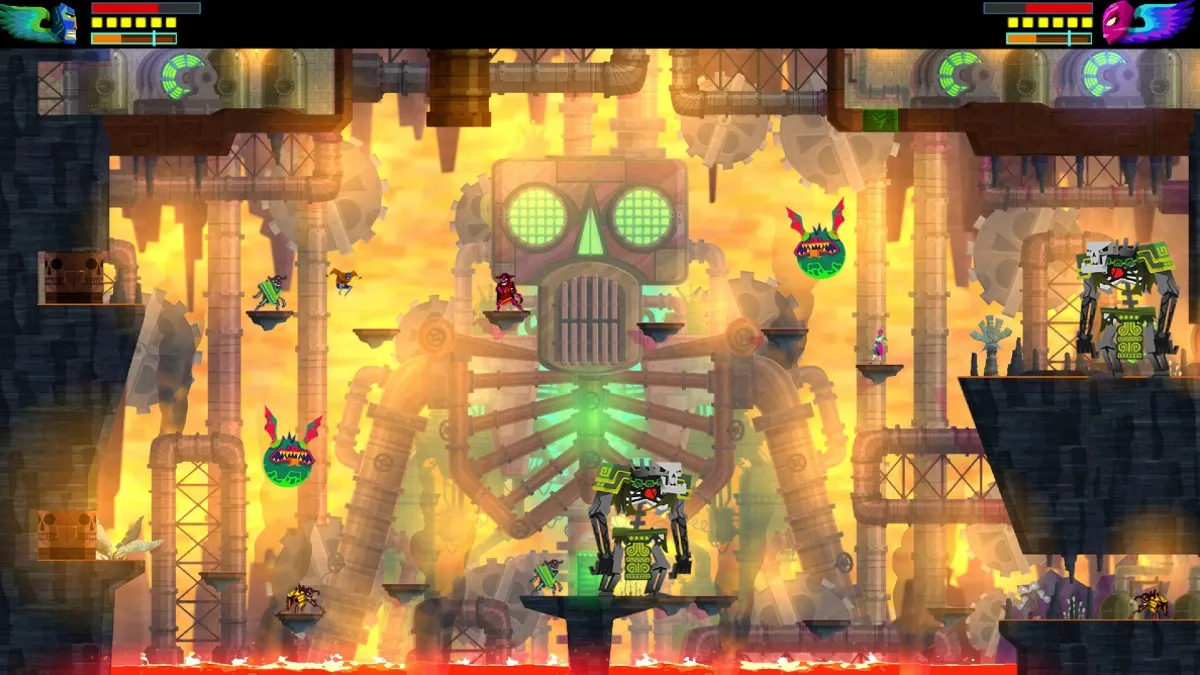
The fact that the game was a blast to play helped me justify the extra time dedicated to doing everything possible within it. Combat makes up half the experience, and yet never grows stale since each new encounter provides the chance for smashing shenanigans. True to the luchador inspiration, the combat within Guacamelee! was physical, visceral, and over-the-top silly. Standard punches, kicks, and ragdoll throws strung together combos that felt easy to start but difficult to maintain. Acquired moves like the Rooster Uppercut or Olmec’s Headbutt increase the variety while also providing more options during fights to keep the damage coming. Even your chicken form can wreak some havoc upon the skeletal baddies.
These special moves hide the secret sauce that made Guacamelee! an innovator within the Metroidvania space: they’re for combat and traversal. Multi-use upgrades aren’t exactly new within the genre — Metroid allows players to acquire new missiles or beams to kill enemies and open doors, while Symphony of the Night allows Alucard to transform into a bat to fight and fly. But these often acted like keys to specific locks instead of Swiss Army knives, either opening special colored doors, destroying blocks to create a new pathway, or allowing you to traverse a previously nonexistent path. Metroid‘s Super Missile was virtually indistinguishable from the regular missile in combat — it just happened to pack a bigger punch and shake the screen a bit more.
The upgrades within Guacamelee!, on the other hand, were purposely built for traversal and combat, allowing them to always serve multiple purposes at the same time. The Rooster Uppercut can destroy red blocks in your path, sure, but it can also raise you just enough to reach a high platform or stagger a group of enemies, throwing one in the air and quickly rising to meet your foe and pummel them into an aerial submission. Every upgrade follows this holistic design philosophy, which makes everything feel useful and necessary. By the time every move is in your arsenal, nothing in the game seems impossible to beat because you’ve already found the solutions time and time again.
It’s impossible not to see the trend that Guacamelee! started within the industry, as it’s impossible to walk 10 feet (or more realistically, scroll through digital storefronts) without finding yet another indie Metroidvania. Some are more straightforward — Hollow Knight perfected the gloomy, Gothic formula with hints of Soulsborne thrown in for good measure — while some are gleefully experimental — Yoku’s Island Express contends that pinball and platform-based exploration work together, and by golly do they ever — but so many are worthwhile experiences. And while Guacamelee! and Drinkbox Studios might not be the progenitors of the trend (SteamWorld Dig released a few months later with many similar ideas), they’re worth celebrating for showing the possibilities open to independent developers.
No genre was too sacred to be tinkered with, expanded on, and refined. No team was too small to dedicate time and effort to make something worthwhile. (More than almost any other genre, a shocking number of Metroidvanias are made by a singular developer.) There was no bar for what indie developers could make — only ceilings they could crash through on their way to the top. And if anyone ever gets downtrodden or worried that their idea is too grand, too out there, or too satirical, all they have to look at is a brave Luchador and his Canadian developers who knew that their potential went far beyond mutant blobs. All they had to do was find what no one else was doing and trust that it was the right path. That they had the grit, skill, passion, and cojones to make something special enough to not only stand up to their inspirations but, in some ways, even surpass them.

